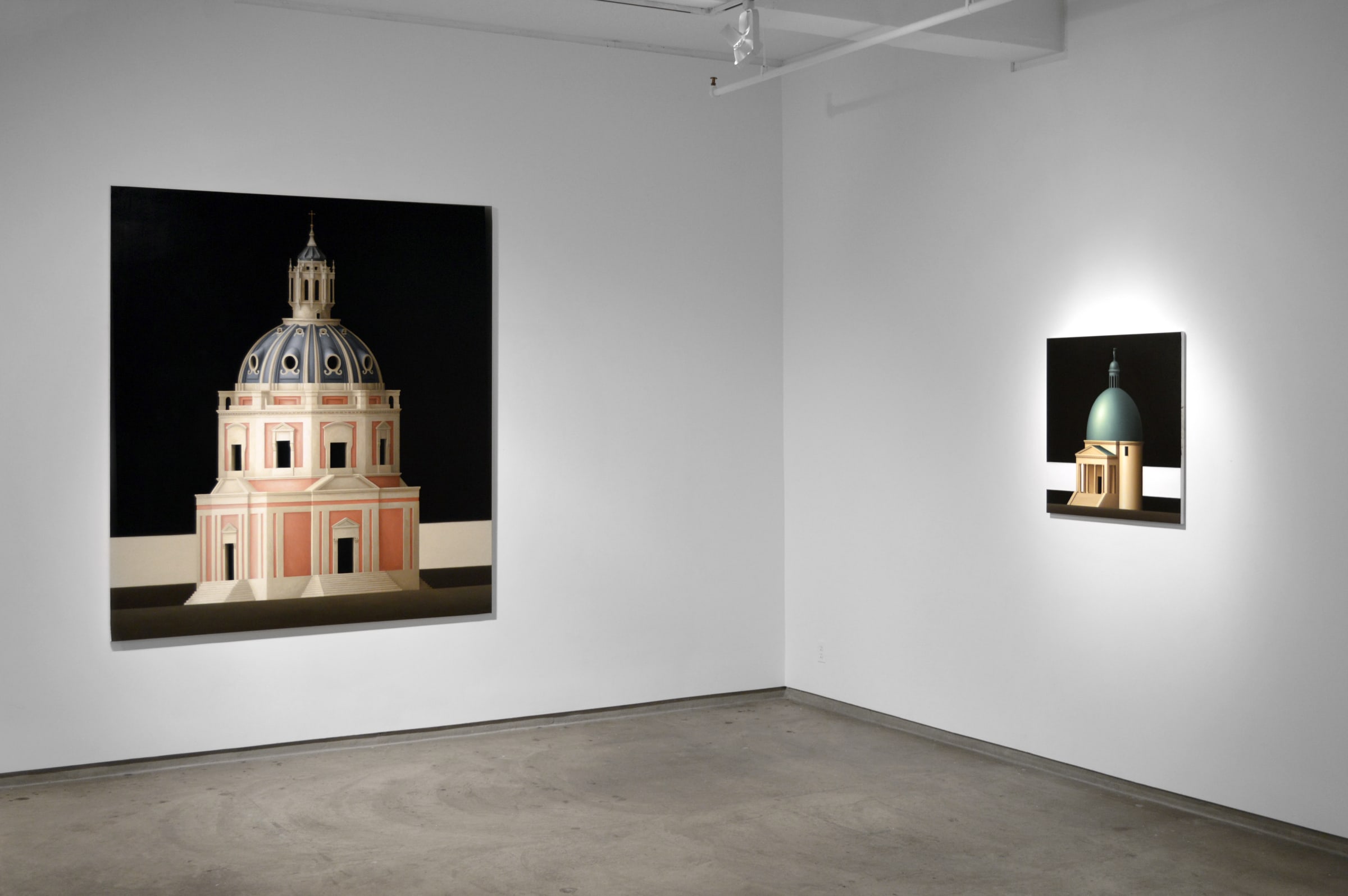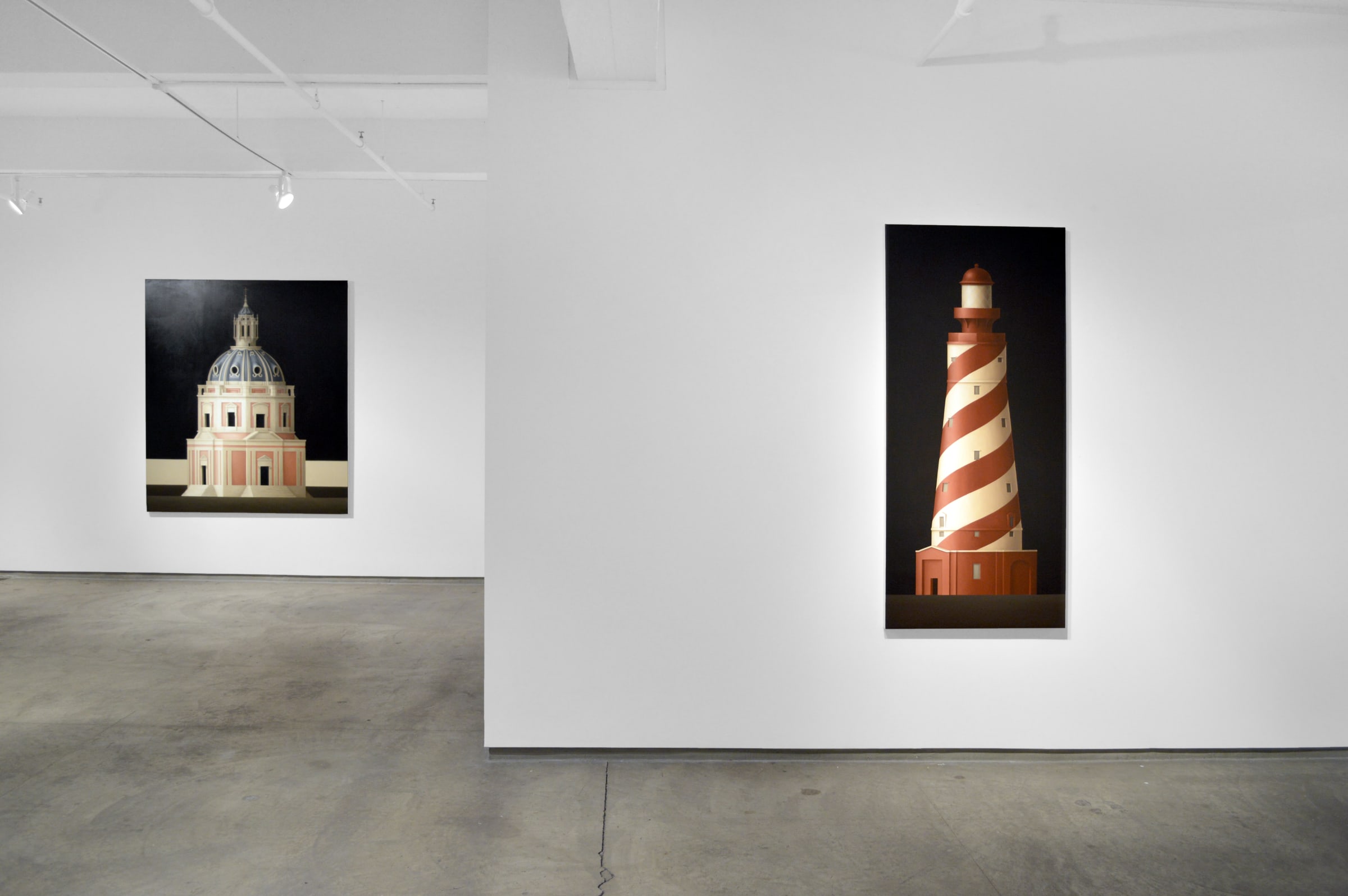Overview
Tait's recent works focus more than ever on the simplified underlying geometry of architectural subjects, eliminating linear perspective almost entirely, to emphasize the horizontal and vertical planes.
Flowers is pleased to announce an exhibition of new paintings by the renowned Scottish artist Renny Tait. The show will run from October 16 through November 15, with an opening reception on Thursday, October 16, from 6 to 8pm.
Always intrigued by the quality and subtlety of curve and structure, Renny Tait started experimenting in acrylics and oil at a young age, translating three-dimensional realities onto two-dimensional surfaces through the use of color and tone. Later on, Tait would begin to suppress elements of perspective in the foreground, establishing a frontal iconic presence for his architectural structures.
Tait's recent works focus more than ever on the simplified underlying geometry of architectural subjects, eliminating linear perspective almost entirely, to emphasize the horizontal and vertical planes.
Many of his subjects are immediately recognizable: Venetian churches, medieval fortresses and Roman ruins are typical motifs. Hinting beyond a structural functionality, the lighthouse form, in particular, offers a metaphor for the standing human figure. Set against the allusive and indeterminate space of the black background, the subject commands attention with its otherworldly illumination, inviting the viewer to read the building as a place of refuge.
Where the subject lacks an obvious beauty of its own, Tait's mastery of lighting and composition works a strange, potent magic, allowing normally prosaic buildings like grain silos and power stations to happily hold their pediments high in the architectural firmament.
There is something a little unsettling about this leveling of the aesthetic hierarchy, but the work is all the better for it. Tait conjures up an eerie architectural utopia where all buildings are created equally. By displacing each one into a featureless, uninhabited wilderness, by banishing all sense of scale through his universal head-on perspective, and by illuminating every subject with the same heavenly glow, Tait forces the viewer to re-evaluate the whole notion of archetypal beauty.
Tait employs a deliberately limited palette, achieving a wide range of tonal and chromatic values without sacrificing the overall unity of each painting. The predominant earth tones in works such as Dubrovnic,2014 are reflective of a certain austerity of taste that was popular in 17th century Spain, invoking quasi-religious connotations. A horizontal band of unmodulated light traverses the background of several works, further adding to their unearthly quality.
According to the late Robert Heller, Renny Tait's paintings, "with their virtuoso technique, bridge the worlds of classicism and abstraction. The later influences - Mondrian, Morandi, Barnett Newman - blend comfortably with the very different worlds of Bellini and Wren to form Tait's own mysteriously depopulated universe of colour harmonies and glowing light. They remind the viewer in calm but seductive terms of two important truths: that all art is abstract, and that neither beauty nor painting is dead."
Renny Tait was born in Scotland and studied at the Edinburgh College of Art, the Royal College of Art, London, and the British School in Rome. His work is included in a number of private and public collections including the Royal College of Art and the Tate Collection.
Tait's recent works focus more than ever on the simplified underlying geometry of architectural subjects, eliminating linear perspective almost entirely, to emphasize the horizontal and vertical planes.
Works











